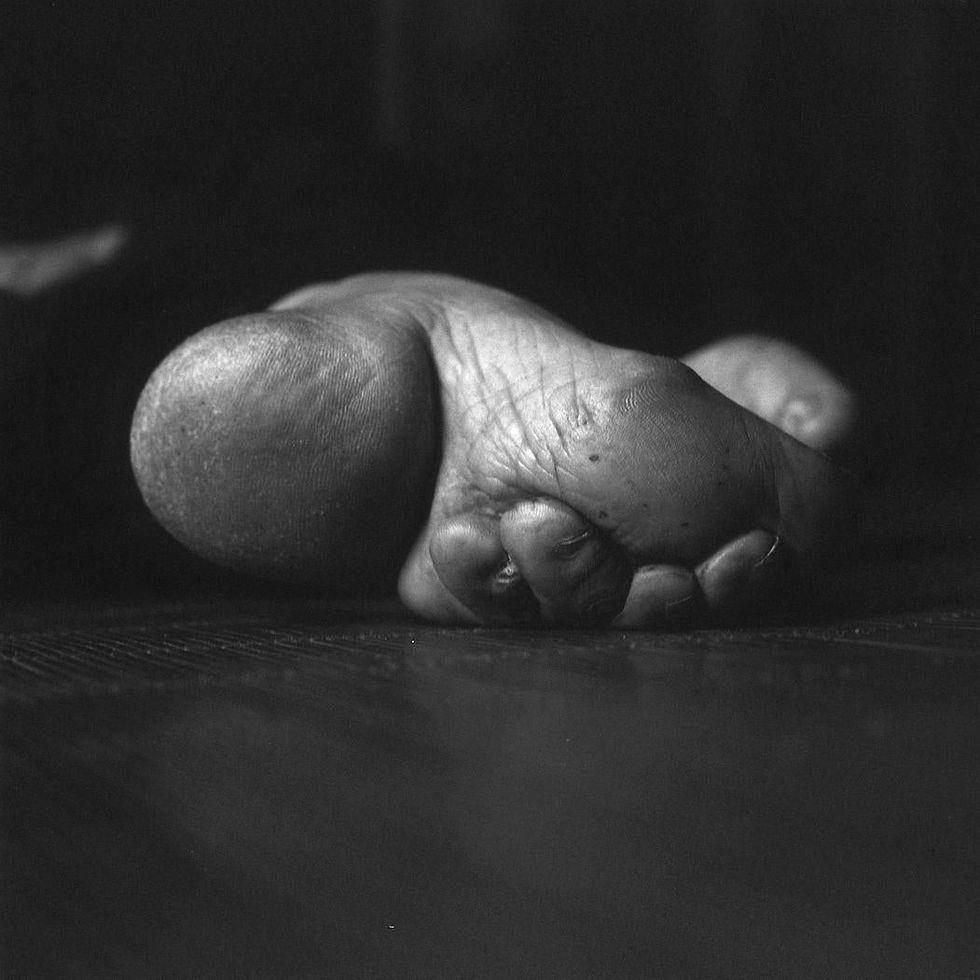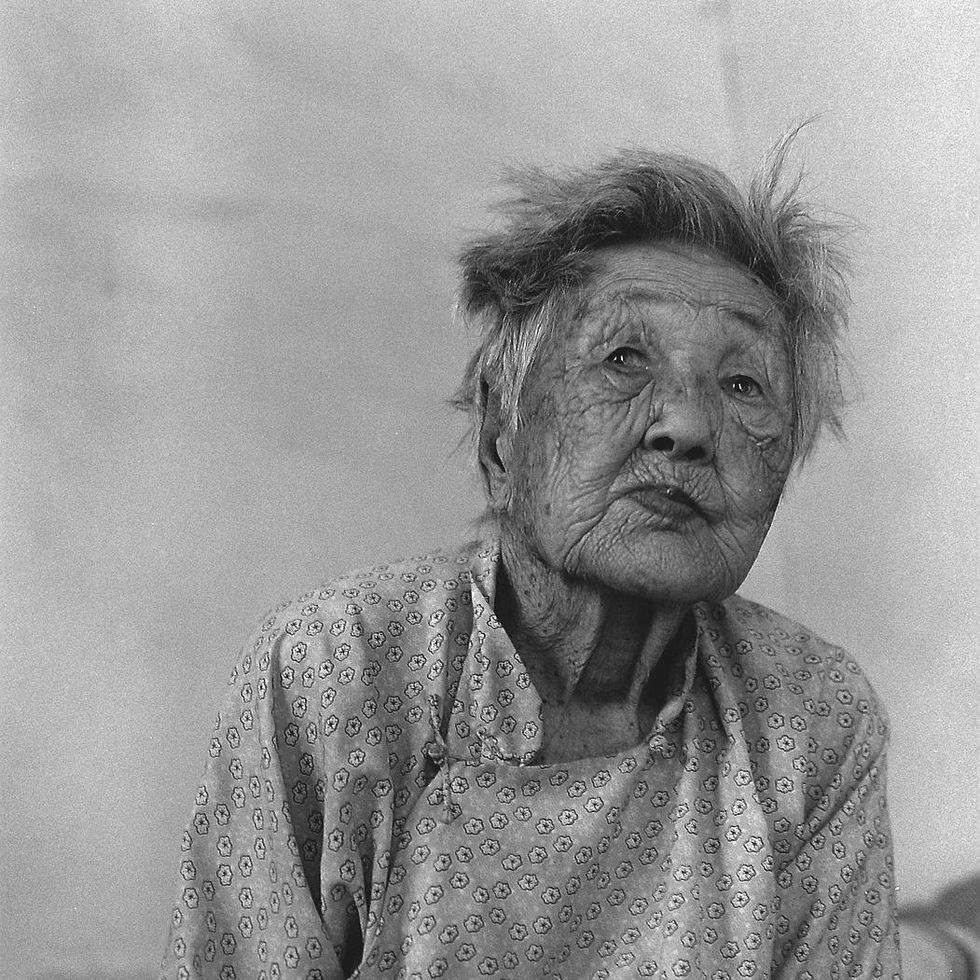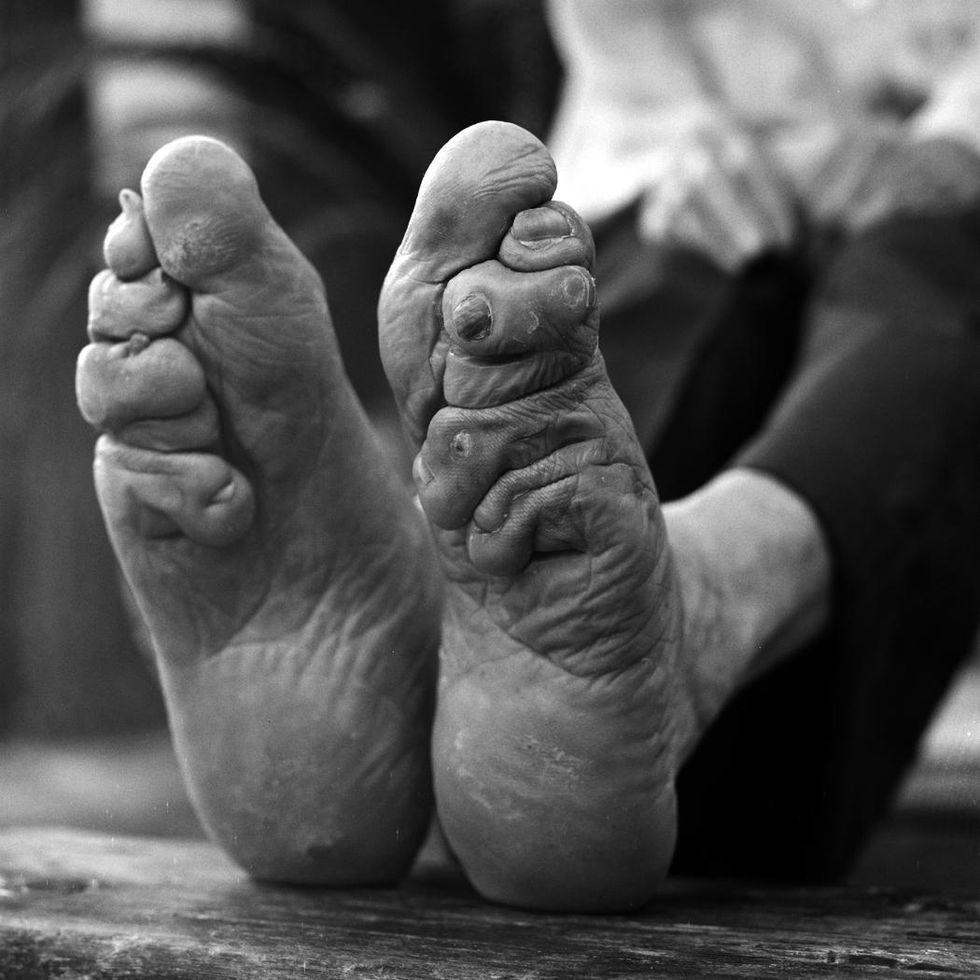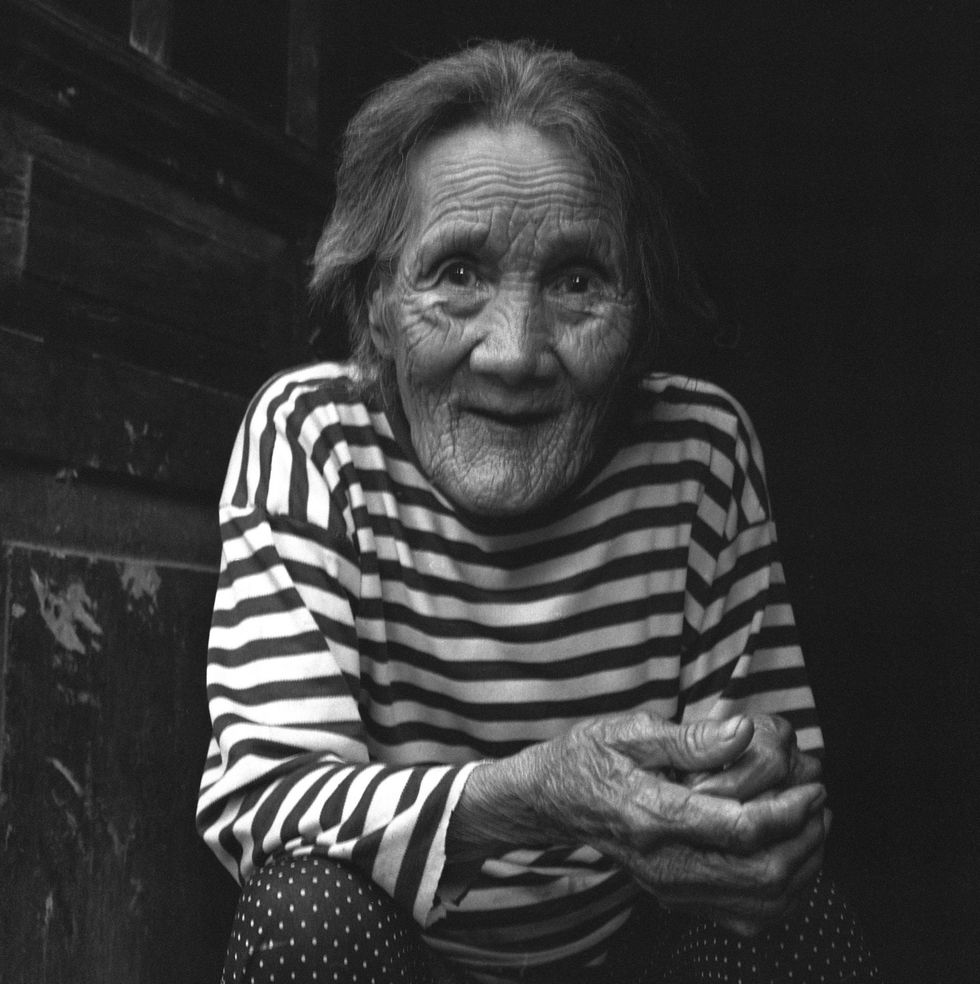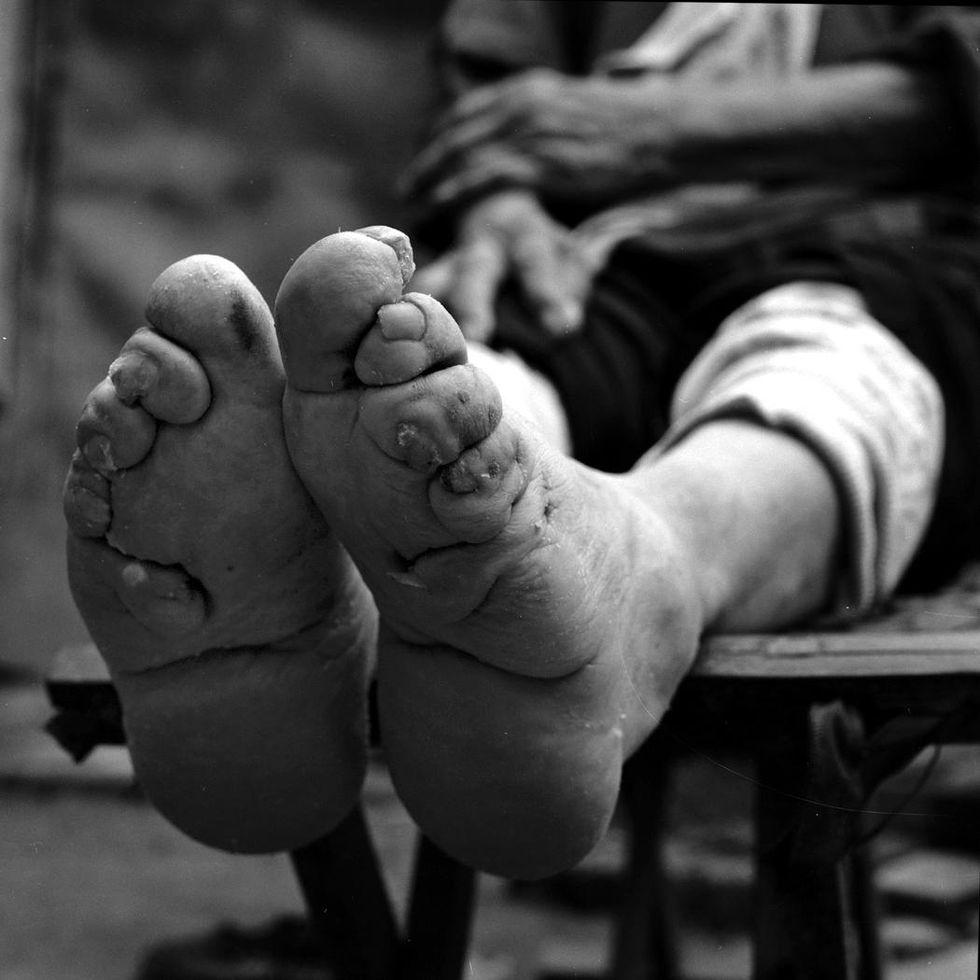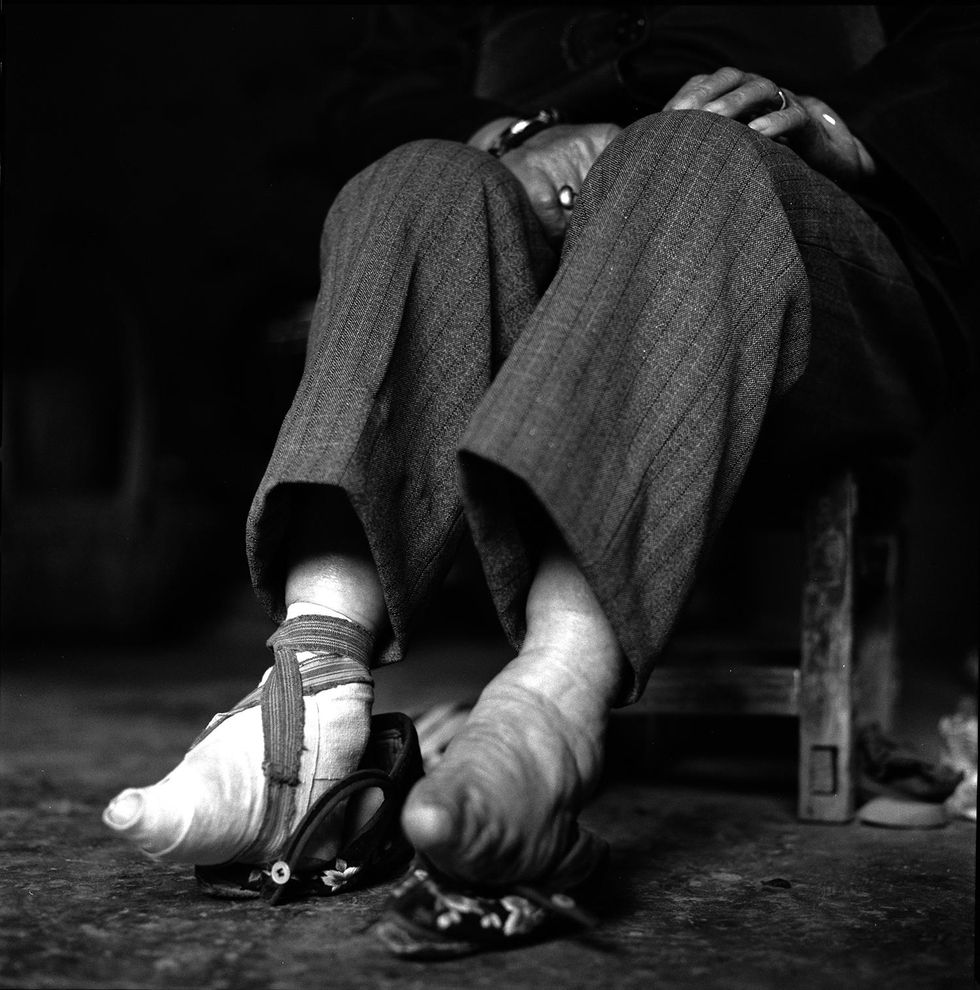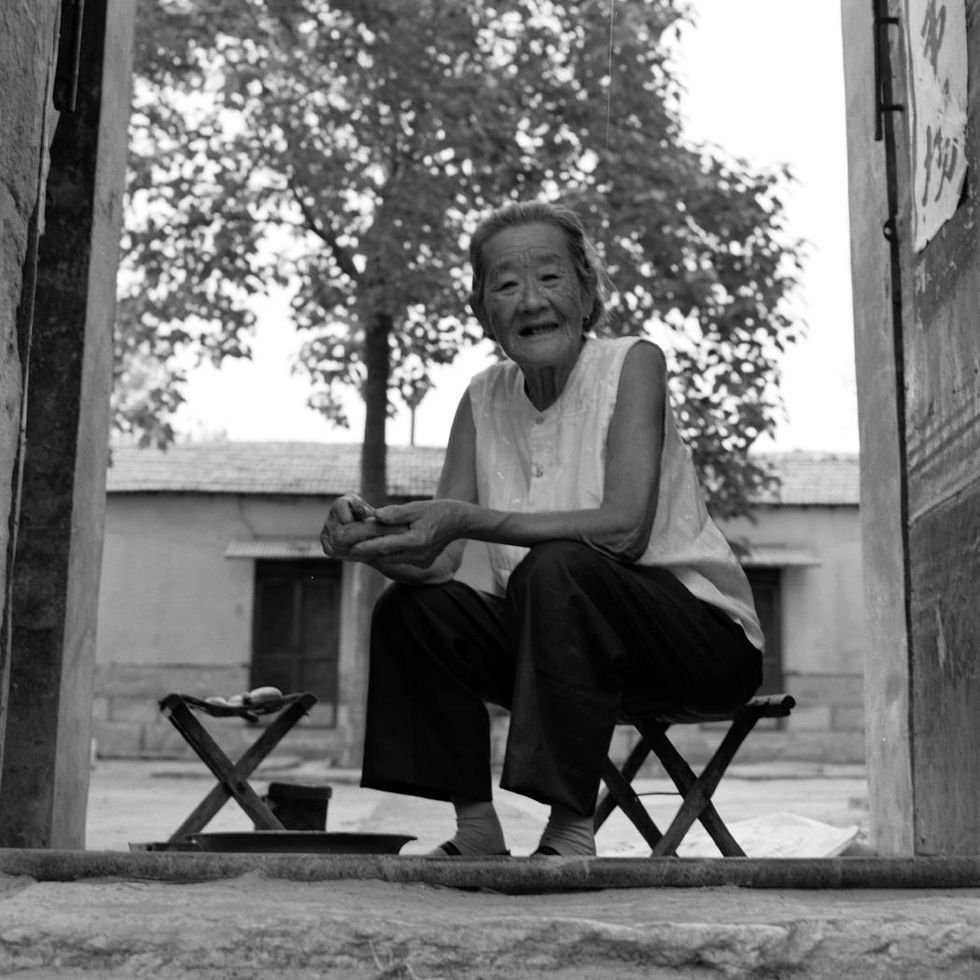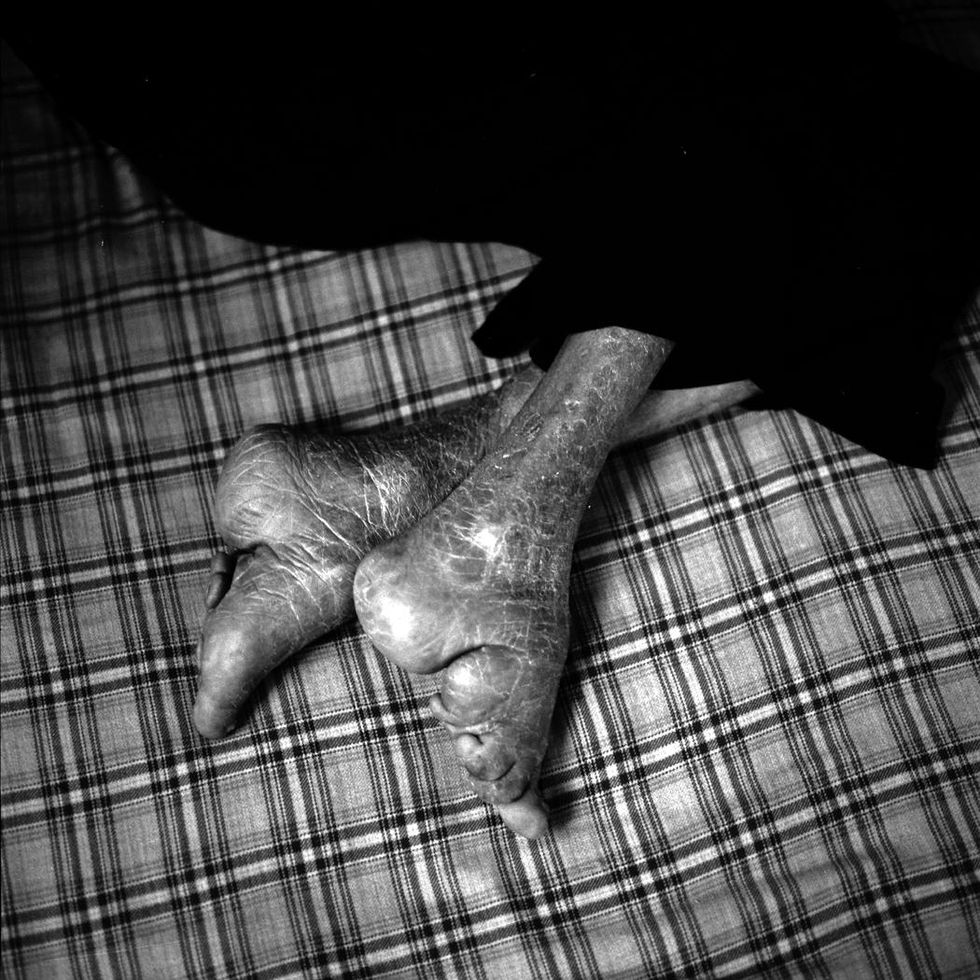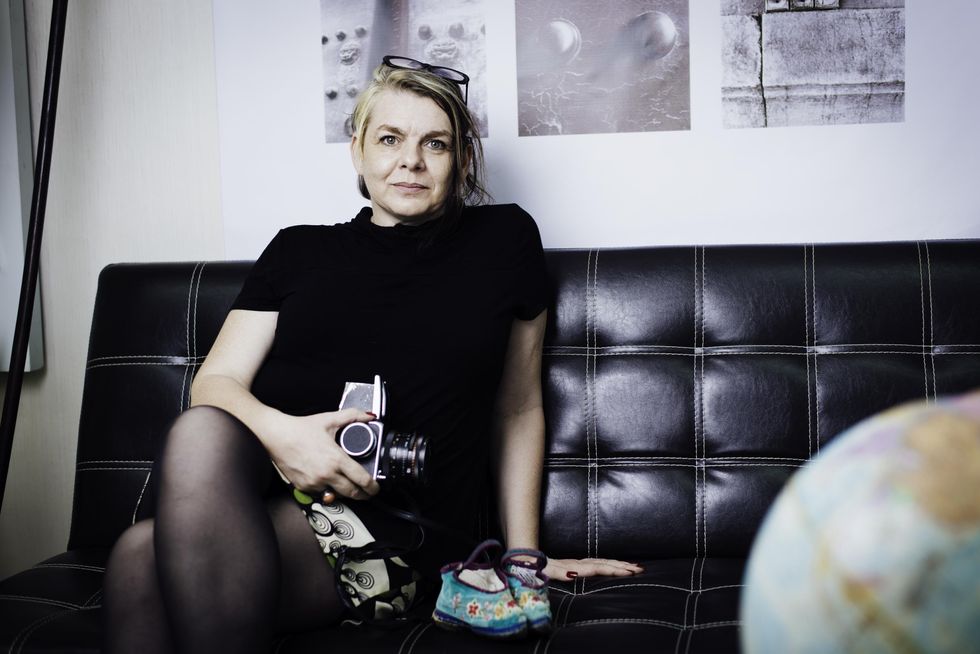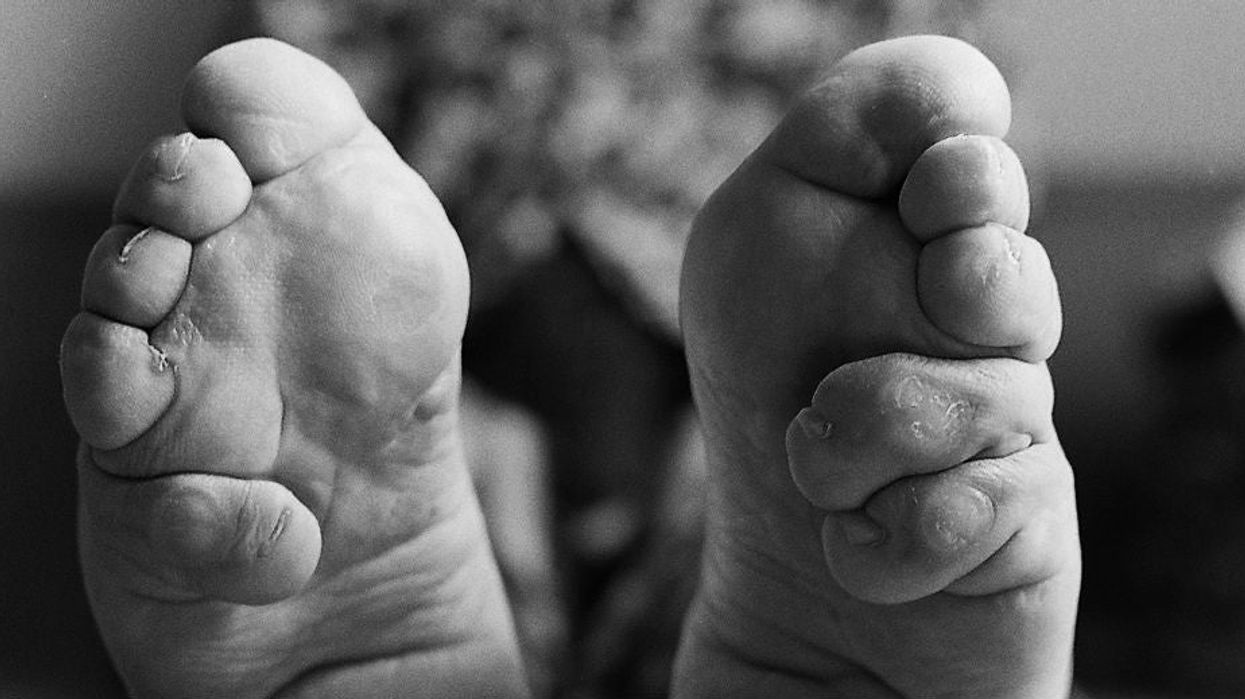
Foot binding - the art of binding a woman's foot for many years until it becomes small and altered in form and shape from its original state - was practised in China for centuries before it died out.
Photographer and academic Jo Farrell has spent over a decade painstakingly documenting women of China who have had their foot bound.
She wanted to create an alternative narrative about the cultural practice, and to humanise what the western world have traditionally seen as an alien and strange element of Chinese history.
Indy100.com spoke to Farrell about her process, different standards of beauty and orientalism.
Your photo series documents a dying age. What sort of reasons did women give to bind their feet?
Traditionally in Chinese Han society bound feet was a practice past down by mothers and required by mother-in-laws.
It was not only considered beautiful, it was a sign of filial piety - that a young girl honoured her family, the father, husband and her future sons. A girl with bound feet would be considered a good bride or wife as she had already endured pain and suffering, she would not complain and would do her best to honour the family.
It was also a way of bettering yourself - if you did not have bound feet you knew you would be chosen last. Most of the women that are still alive say that it was tradition, you just did it, it was what was expected of you.
Was there a person who you photographed, who made a particular impression on you?
Huo Guan Yu - 89 years old in 2010
1921 - 2016
Huo Guan Yu was a lovely lady - when I first met her, she had been bed bound for seven years after a fall and but was looked after well by her daughter-in-law. When she was 6 years old her sister taught her how to bind her feet and they remained bound until 2010.
When I asked her why she had decided to unbind her feet after so long she said that it was because she now needs help with the binding and no one does it correctly. She rarely left the room she lived in. She would tell me that she was too old to still be alive. It was wonderful when she smiled.
How did women who you photographed react to you?
At first they are surprised that someone is interested in their feet - I show them photographs of other women and their bound feet that I have photographed / documented. I explain that this is more an anthropological, educational project that I want to record these women before it disappears.
They understand that I am trying to preserve their stories and document in photographs their feet, so there is a record of them for future generations.
How did you navigate being an outsider?
In some ways being an outsider works greatly in my favour. In China, foot binding is considered such an old tradition that the younger generation don't want to bring up the past, they believe it does not represent China today.
It takes an outsider to come forward and want to capture an old tradition rather than progress.
Photographing other communities can sometimes veer towards orientalism How did you prevent the interactions from being exploitative, and from orientalising your subjects?
Interesting question.
My work is about capturing women's traditions and cultures before they die out and we have no record of them.
I went into the project 13 years ago with preconceptions of foot binding but when I held in my hands a bound foot, it was so soft and beautifully structured that I realised how much the woman had gone through to obtain what was considered in her society at that time, beauty, acceptance.
When I give lectures on foot binding I talk about what we consider is beauty and how it differs in every culture. That we should embrace these differences rather than cast judgements.
Over the past 13 years I have visited some of these women annually. I follow through and find out how their lives are going. I really enjoy my visits with them, I feel like
I have an army of grandmothers out there. I share meals with them and drink lots of tea!
What was the reception for your photographs?
When I talk to people or they see my images their first reaction is to cringe at the deformation.
I am trying to put a more human side to it, to show them the women beyond the feet. To discuss contemporary body modifications such as breast augmentation, designer vaginas, rib removal, toe tucks, cosmetically altering your appearance to seek acceptance, to be admired, to ultimately to find love.
I want women to question the steps they take to alter themselves, that they are worthy of acceptance in their own right.
Jo Farrell is currently working on a number of fascinating photo series - including the Kayan women in Myanmar who have brass coils round their necks and the Chin tribes that only the women tattoo their faces.
You can check out more of her work, as well as purchase prints on her website.
